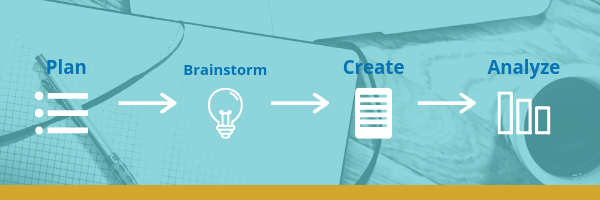
4 Steps for Fruitful Content Strategy
If you don’t have a content program for your marketing and PR, you’re probably about to start one, or you should be thinking about it. The Content Marketing Institute (CMI) reported that content marketing is popular, and growing, with 91% of B2B brands and 86% of B2C brands using it. Quality content brings averages a lesser cost-per-lead in marketing efforts, plus it complements a PR program for bylined content, Q&As, and engaging social.
Even with all these benefits, what CMI found is shocking: Most marketers don’t have a content strategy. Whether advancing content marketing or creating a blog and social program, here are four steps to a fruitful content strategy:
Step 1: Find tools and establish a process
Even if you have a great copy and creative team, your content can fall flat without proper coordination. A content strategy begins with organization. Start by aligning the goals for the program, whether to capture leads, drive awareness, or advance thought leadership. Aligning teams on schedules, copy and asset ownership, approval processes, etc. comes next, which will help define the bandwidth and reasonable timeframe for delivering the project.
A dashboard is the basis for strategy planning and becomes the engine to track and deliver the content. It would include timeframe (whether by month, quarter, or year), asset approval dates and posting dates, content topics, images and links, writers and approvers, status, etc. Caster has used several tools to track programs, from a simple Word document or Google Sheet to Trello boards, Airtable, and more. Find what your team is most comfortable with and can most simply track the information – but don’t let your dashboard become a time suck.
Step 2: Define themes and messages
Once organized, begin content creation. Cohesion is key: A message can become familiar with the audience and start to become effective in delivering leads, press coverage, and brand awareness when well-coordinated across your PR, marketing, social media, and advertising efforts.
Brainstorm themes by thinking big across the full program timeline. Titles can go into your dashboard by campaign, month, or quarter; once you have them defined, you can create the key messages, tag lines, find statistics and facts to include, select image themes, hashtags, etc. to be used across all assets. Content cohesion can also lend bandwidth to your team, where social graphics and copy can be used in ads, and blog content can go into social and emails. A story the PR team landed is also great engaging content for social, and spokesperson or journalist quotes can be used on the website, blogs, social, etc.
Step 3: Start creating
Assign out the content assets to your team on deadline per your dashboard. Creating content requires adaptation to every medium in your strategy, where the challenge is molding your messages to suit the various platform formats. Successfully adapting a message to spread it everywhere your audience consumes content means knowing the town and capability of each platform. A blog has less time to convey a message than a bylined article, and Twitter posts must be shorter and snappier than LinkedIn – plus you have to consider using emojis and how video vs photo will perform.
The PR takes the campaign messages, facts, and image assets and translates them to media and outlets with different beats. An approver for each campaign can look holistically across the content to ensure the messages are cohesive and suited to each medium.
Step 4: Running Your Content Machine
If you’ve created a successful dashboard and timeline, your program delivery should go smoothly. But don’t get too married to your dashboard, evaluate content performance as you go and adapt to make it work. If your emails aren’t working, try a shorter subject line, different sending frequency, or time of day, or maybe social needs a different set of hashtags and to engage with more influencers.
Once you have the content created, you can recycle it by updating it with new stats, images, and updated messages suited to your company’s direction. If smart home safety was a topic in June, it can be adapted from discussing protecting your home while you vacation to keeping an eye on packages that arrive for the holidays.
Capturing the ROI from content isn’t as easy as writing a few blogs. Content strategy is a coordinated effort connecting your marketing outreach with PR initiatives to grow awareness, trap leads, and gain brand recognition. Defining a content program timeline, owners, goals, and key messages ahead of time will drive you towards success.
Have questions on starting a content program? Hit me up on Twitter @LauraShoebell or the full Caster team @Castercomm.

